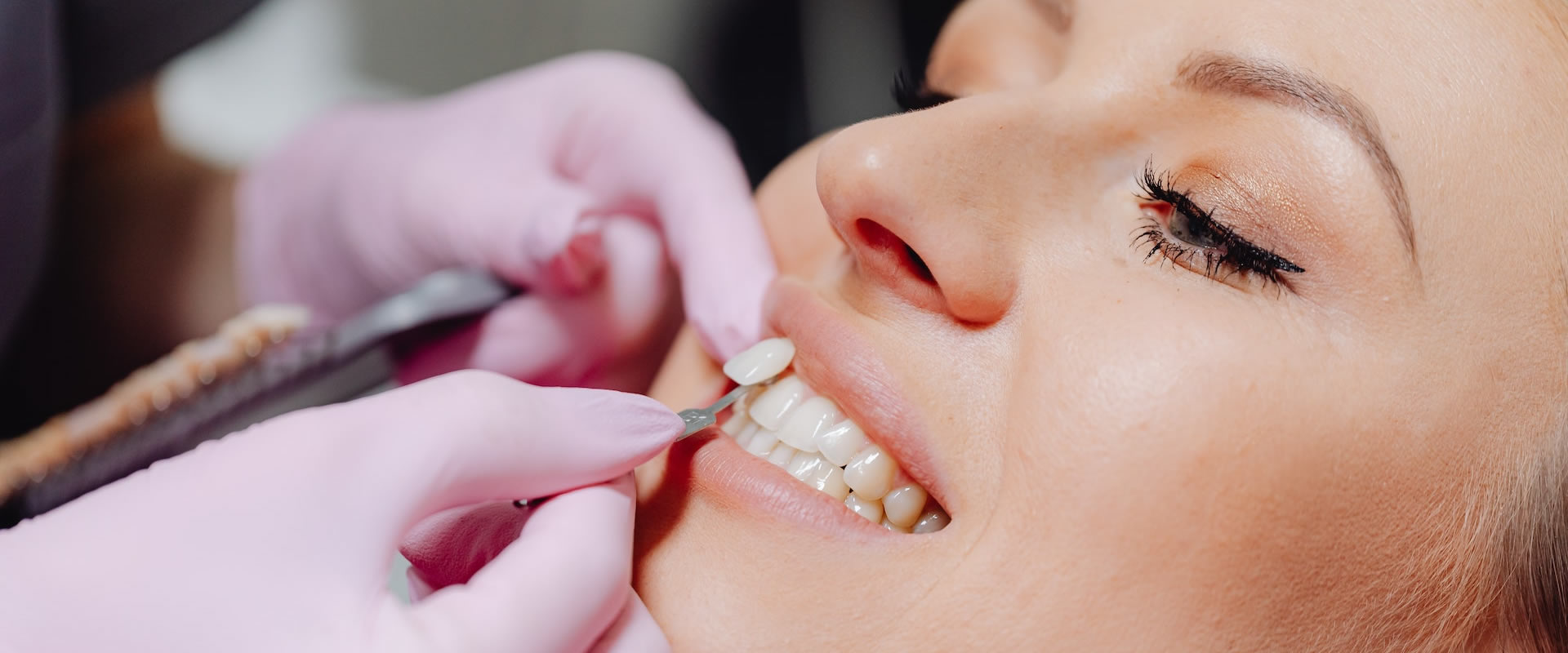Porcelain Veneers
Porcelain Veneers Consultation
Visiting Smile designer Dr. Ekta Chadha and asking about veneers is the first step in determining if veneers are the right option for you, or if there are alternate solutions available. You’ll often hear people say that celebrities have veneers, and this may seem like the best way to replicate picture-perfect teeth, but each mouth has a different smile window, and porcelain veneers need to be carefully researched as an option. Ask Dr. Ekta Chadha about Laminates/Veneers/Lumineers/Thineers. Find the right option for your masterfully crafted smile.

Deciding that porcelain veneers will create the look you want is only one step in the process. The bond between the original tooth and porcelain veneer is critical as it not only provides the aesthetic perfection desired but also a strong bond with the veneer and is then hardened using a special curing light.
Porcelain veneers are a very successful option in many situations where the original tooth has developed poor color, shape, or contours. It is also a good choice for fractured teeth, gaps between teeth, and in some situations where the tooth position is compromised and there are minor bite-related problems. For some people, superficial stains do not respond well to tooth whitening or bleaching. In these situations, a porcelain veneer may be the best option.
PREP OR “NO-PREP” VENEERS/THINEERS
Some patients are looking for an alternative to traditional dental veneers or tooth bonding, but be aware that this treatment option is not appropriate for everyone.
Just as with porcelain veneers, “no-prep” or minimal preparation veneers—so called because they typically don’t require the dentist to remove as much tooth material—are bonded to the front surface of your teeth. Often, the placement of no-prep veneers can be done more quickly and with less discomfort than traditional veneers.
BENEFITS OF PORCELAIN VENEERS
Since veneers are individually sculpted for each patient, it is nearly impossible to tell the difference between a veneer and a natural tooth. Unlike natural teeth, custom-made veneers resist coffee and tea stains and cigarette smoke because they are made of high-tech materials.
With veneers—as opposed to crowns—your natural teeth remain largely intact, with only a minimal amount being altered to fit the veneer.
For teeth that resist whitening, veneers can make even the darkest teeth appear bright white.
POTENTIAL VENEER DOWNSIDES
Because a portion of the original tooth enamel is reduced, a veneer is not considered a reversible treatment. Although adjustments and even new veneers can be made, you can never reliably return to the original condition of the tooth.
Creating porcelain veneers requires some laboratory time, so expect at least a week before they’re ready to be applied.
After the porcelain veneers are attached, you will probably have some sensitivity to hot and cold temperatures due to the removal of that thin layer of enamel. This typically disappears within a few days. In a healthy mouth properly treated with porcelain veneers—and where destructive forces are minimized or eliminated—a patient should be able to use porcelain veneers like his or her own teeth. Although they’re very strong, veneers are also brittle. You should avoid the same excessive stress you would avoid with non-veneered teeth. Don’t bite your fingernails, chew ice, or open beer bottles with your veneers!
MAINTENANCE OF A VENEER
Maintaining porcelain veneers is actually quite simple. Treat them as you would your original teeth, with routine brushing and flossing. Using non-abrasive fluoride toothpaste will typically be suggested by your dental professional.
One week after your veneers are placed, you will be required to return to the office for a follow-up visit and evaluation so the dentist can see how your mouth is reacting to the veneers. Even if you feel the veneers were a success, this appointment is vital to your future oral health.
If you have a habit of grinding or clenching your teeth, your dentist may fit you with a nighttime bite guard so you do not damage your veneers.
You should also return to your dentist for regular professional maintenance because porcelain veneers should be polished with a specially formulated, non-abrasive paste and because your dentist needs to inspect your dentistry for any signs of potential failure.
BENEFITS OF PORCELAIN VENEERS
Dental veneers are individually sculpted for each patient. It is nearly impossible to tell the difference between a veneer and a natural tooth. Dental veneers can be designed to match your natural adjacent teeth or can be used to improve the aesthetics of your smile.
Dental veneers are made from high-quality dental porcelain that reflects light like natural teeth. The semi-translucent appearance helps veneers blend with your smile for natural results. Veneers are long-lasting, beautiful, and create a smile that patients feel proud to share.
